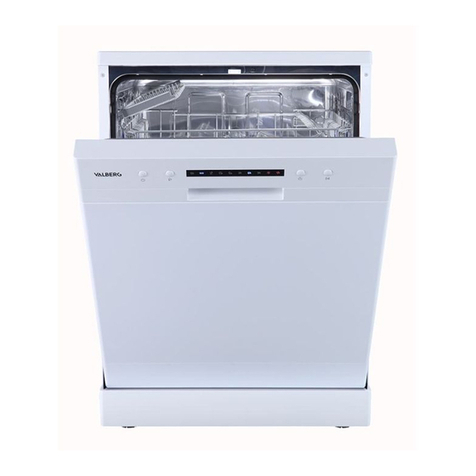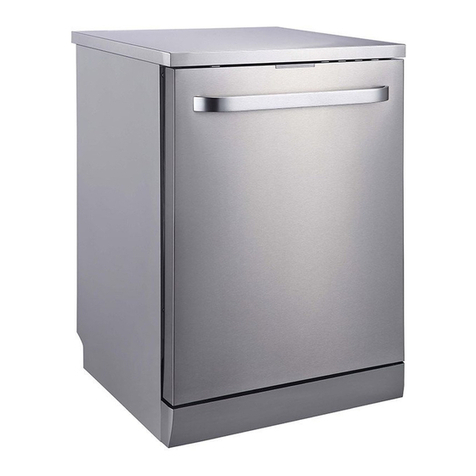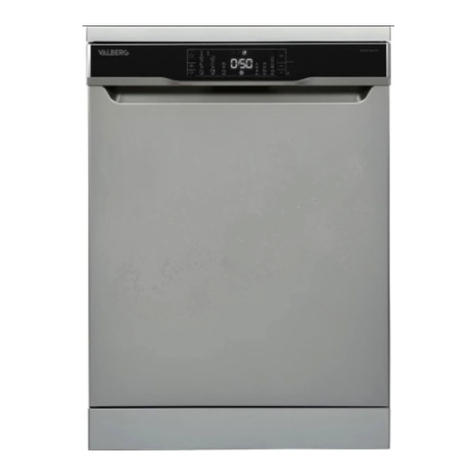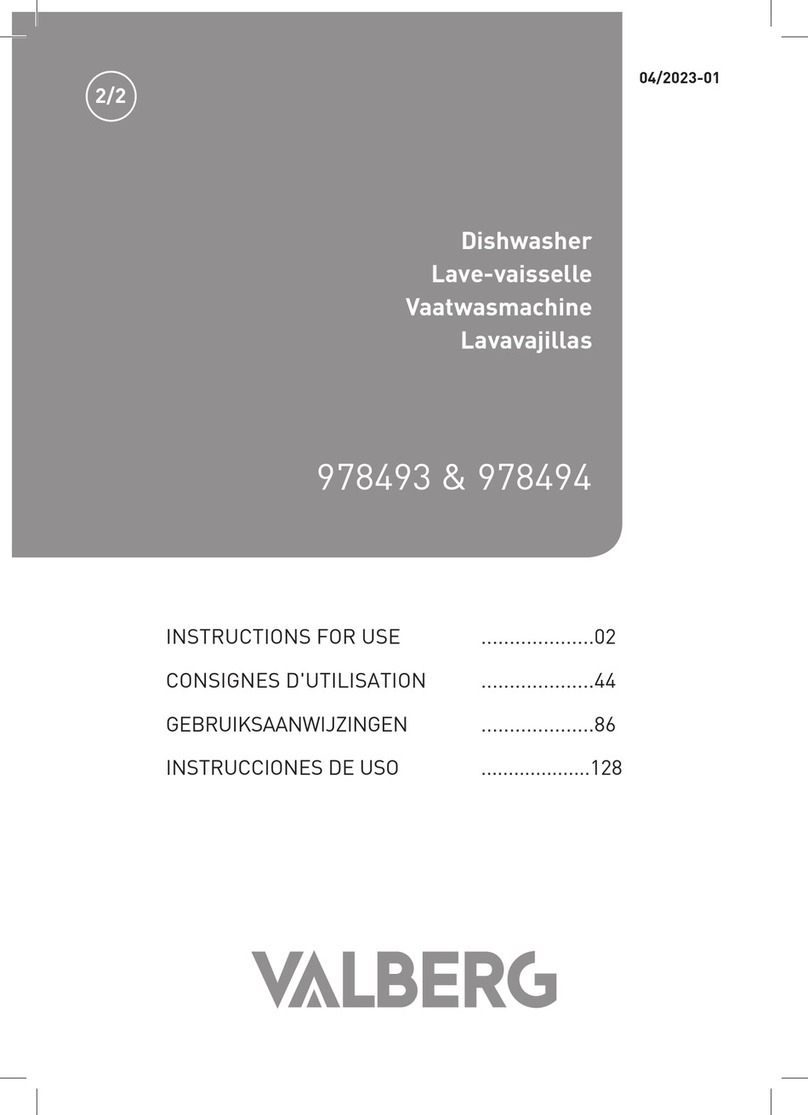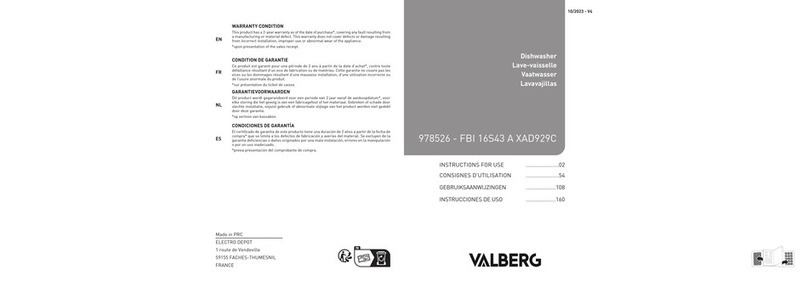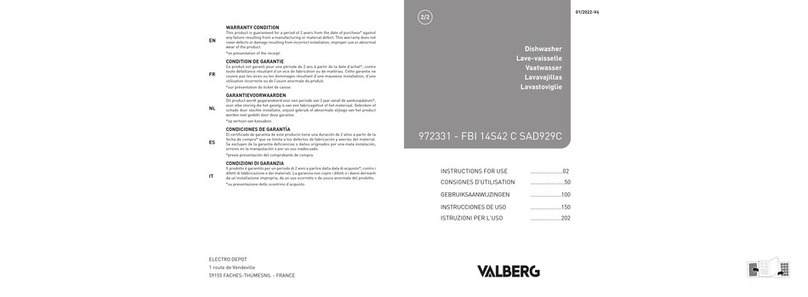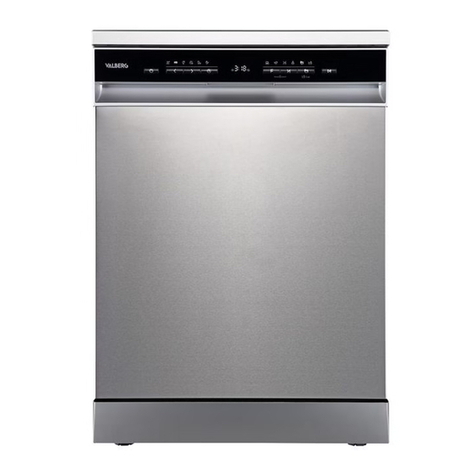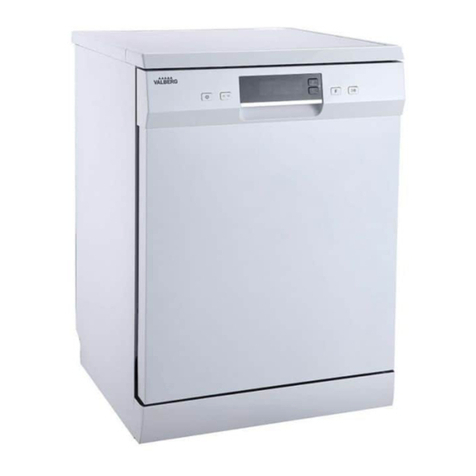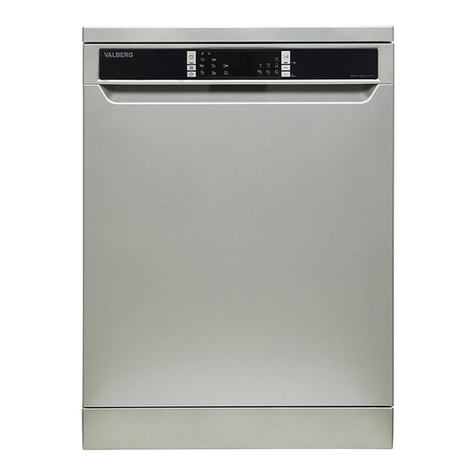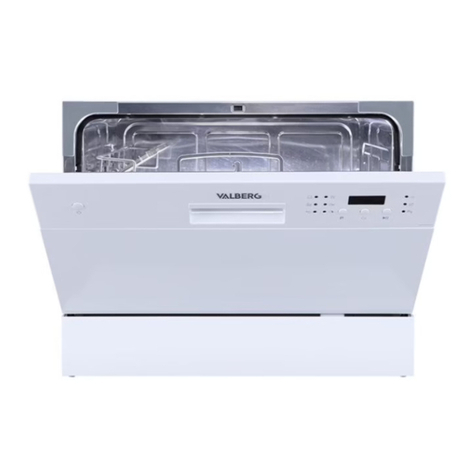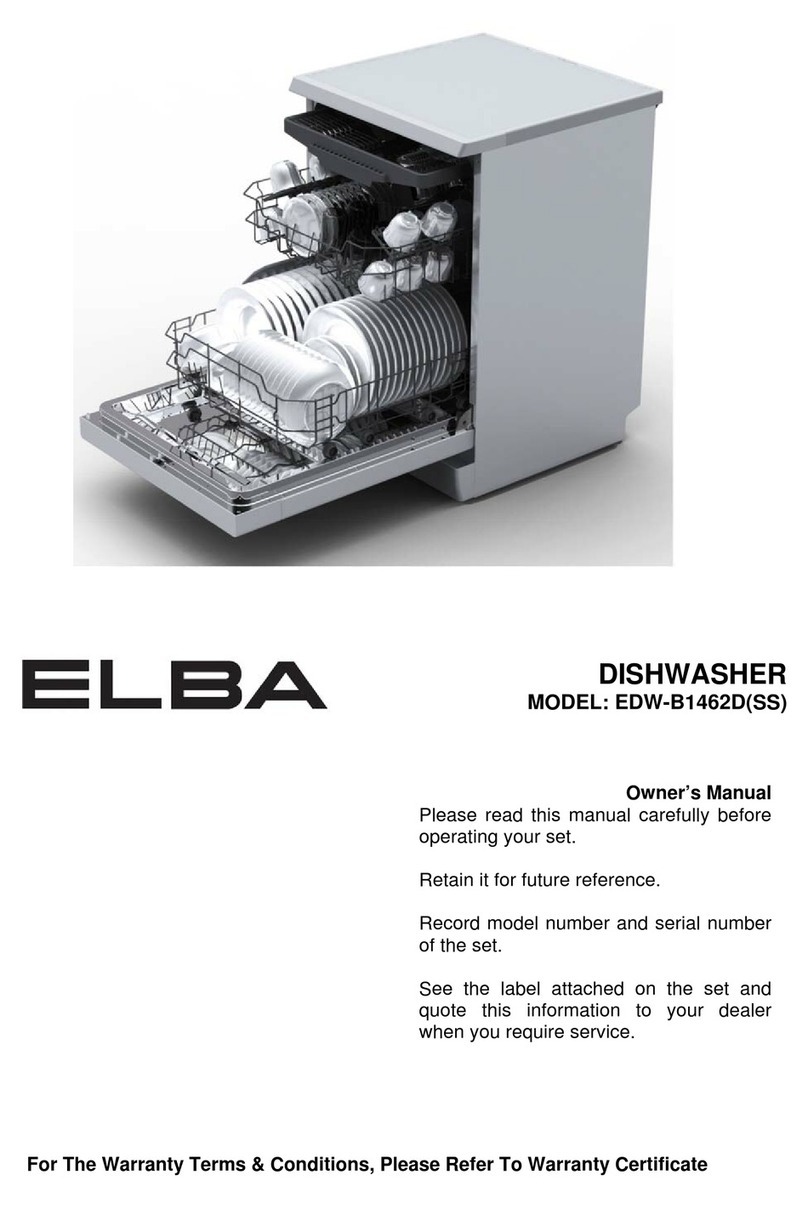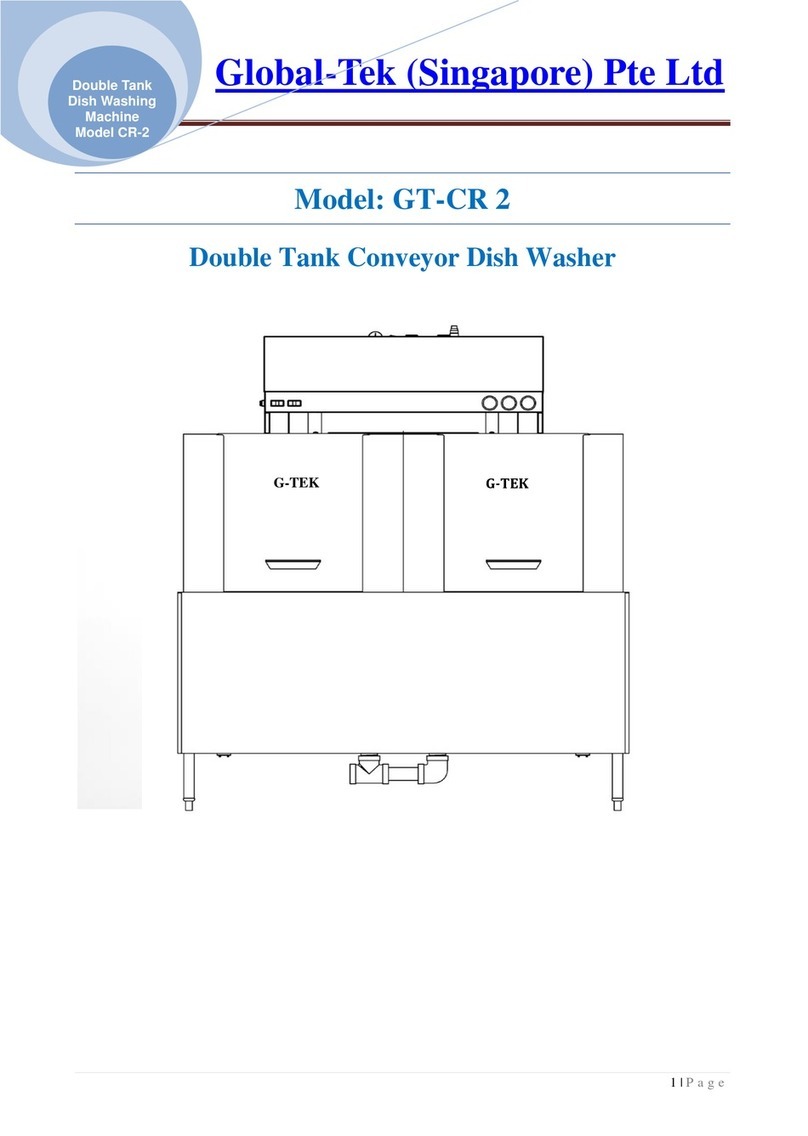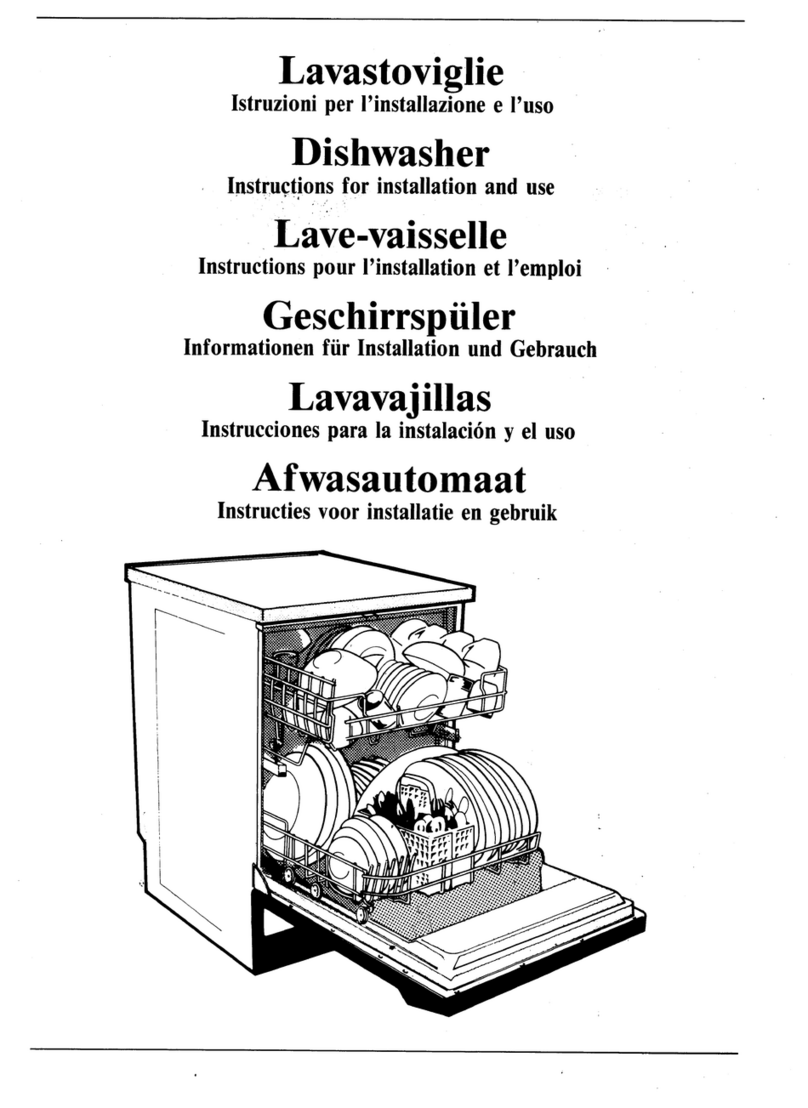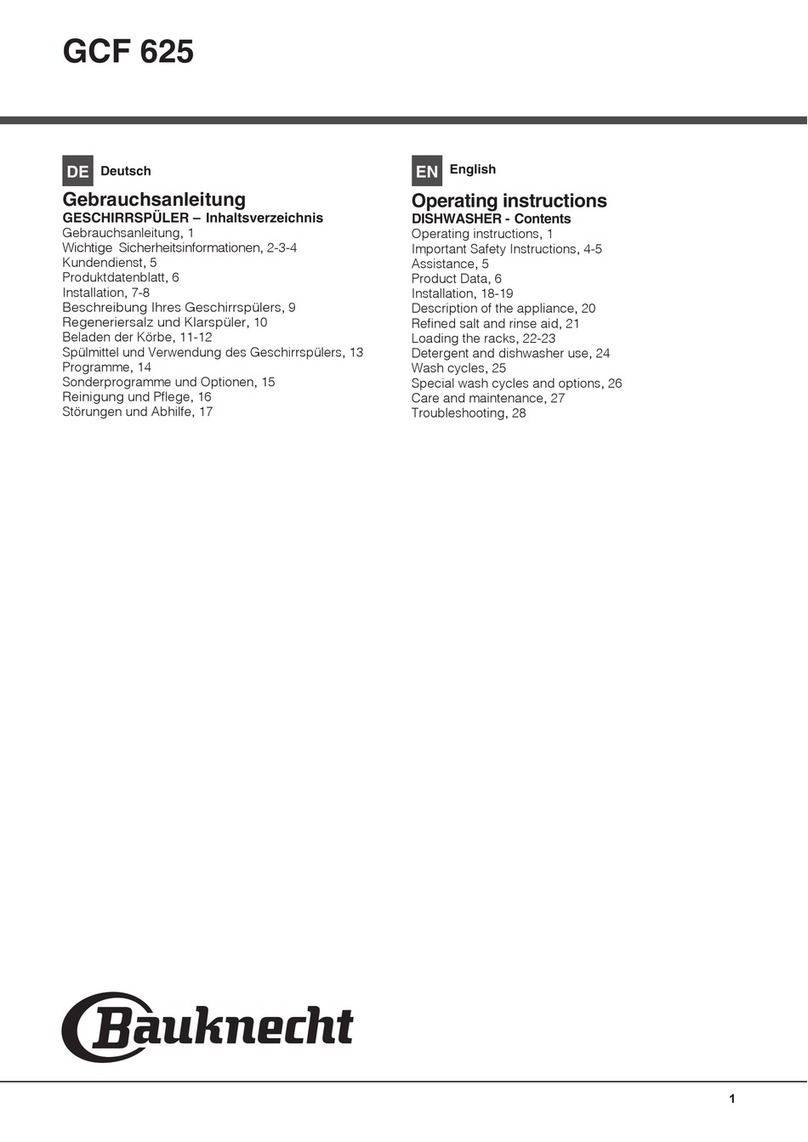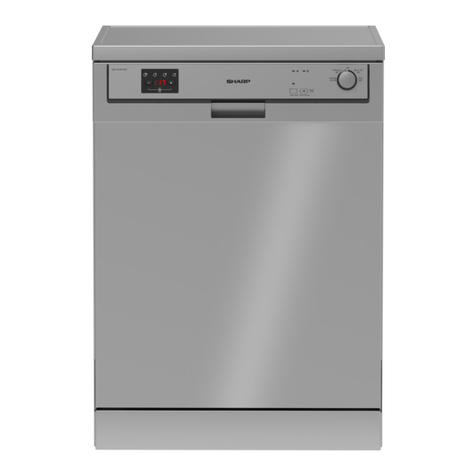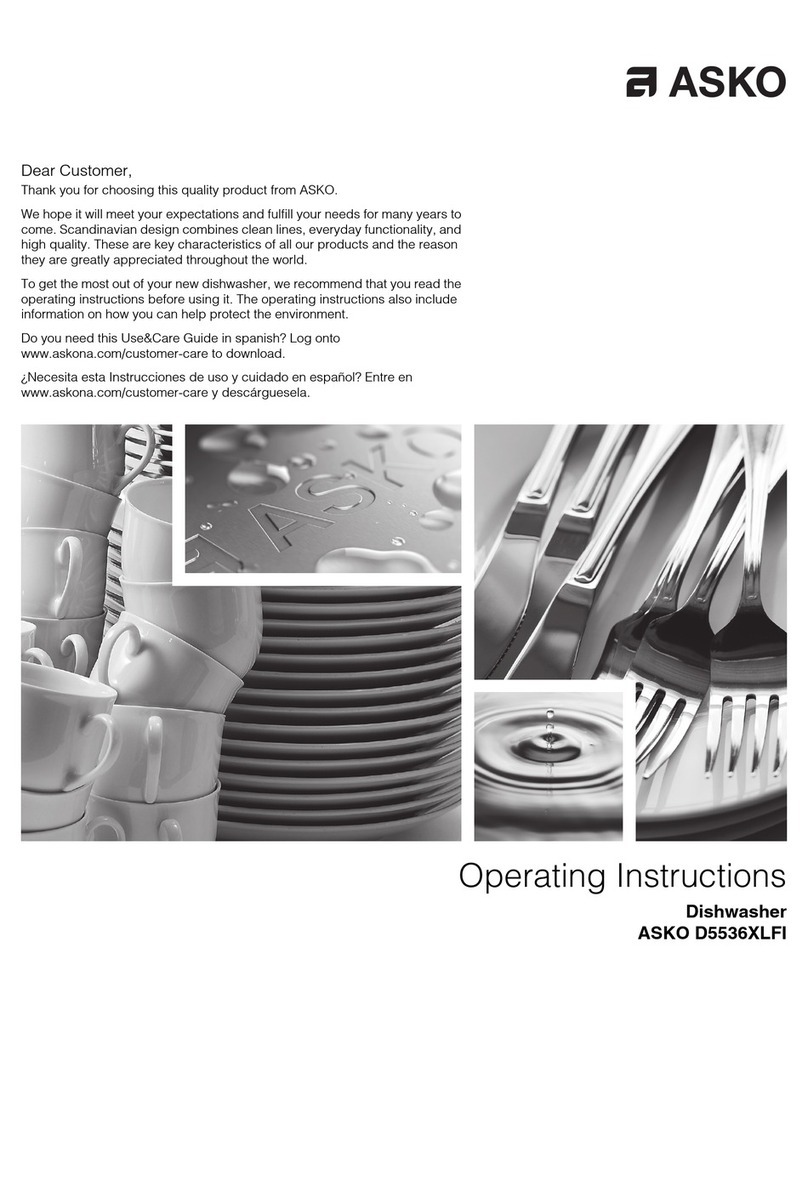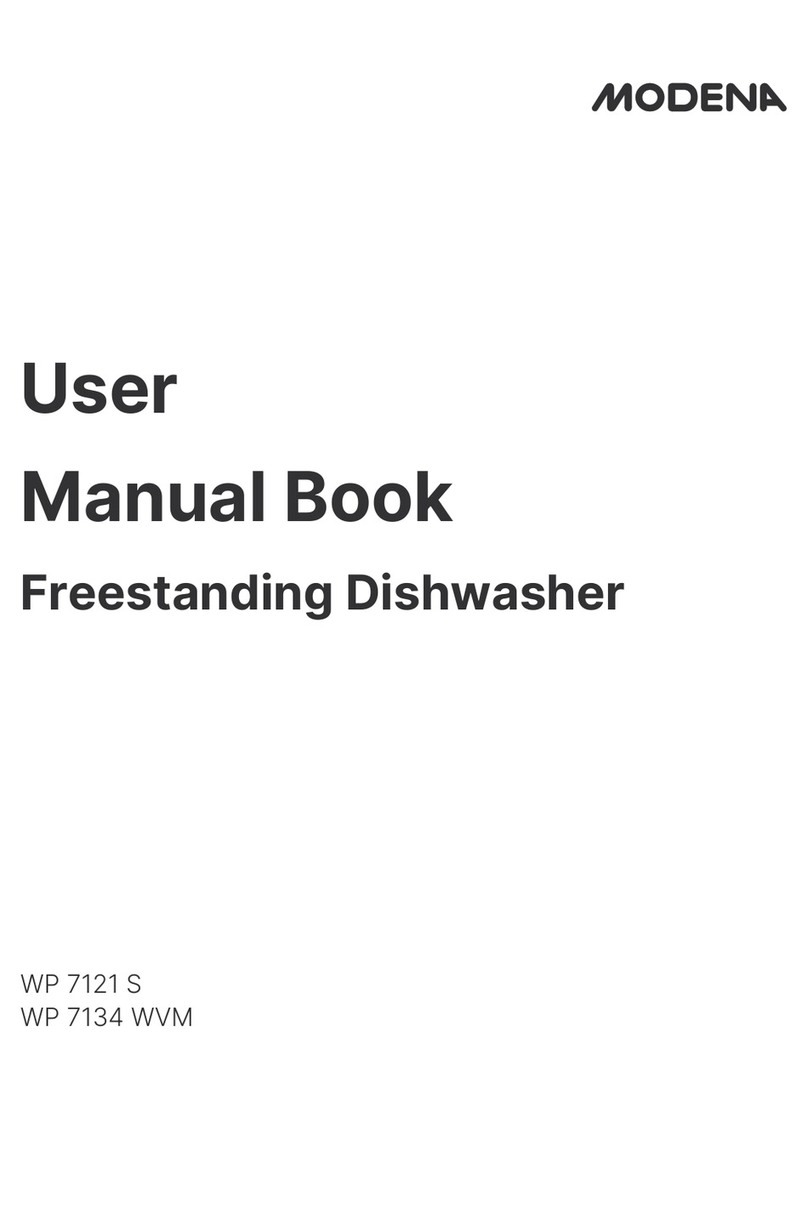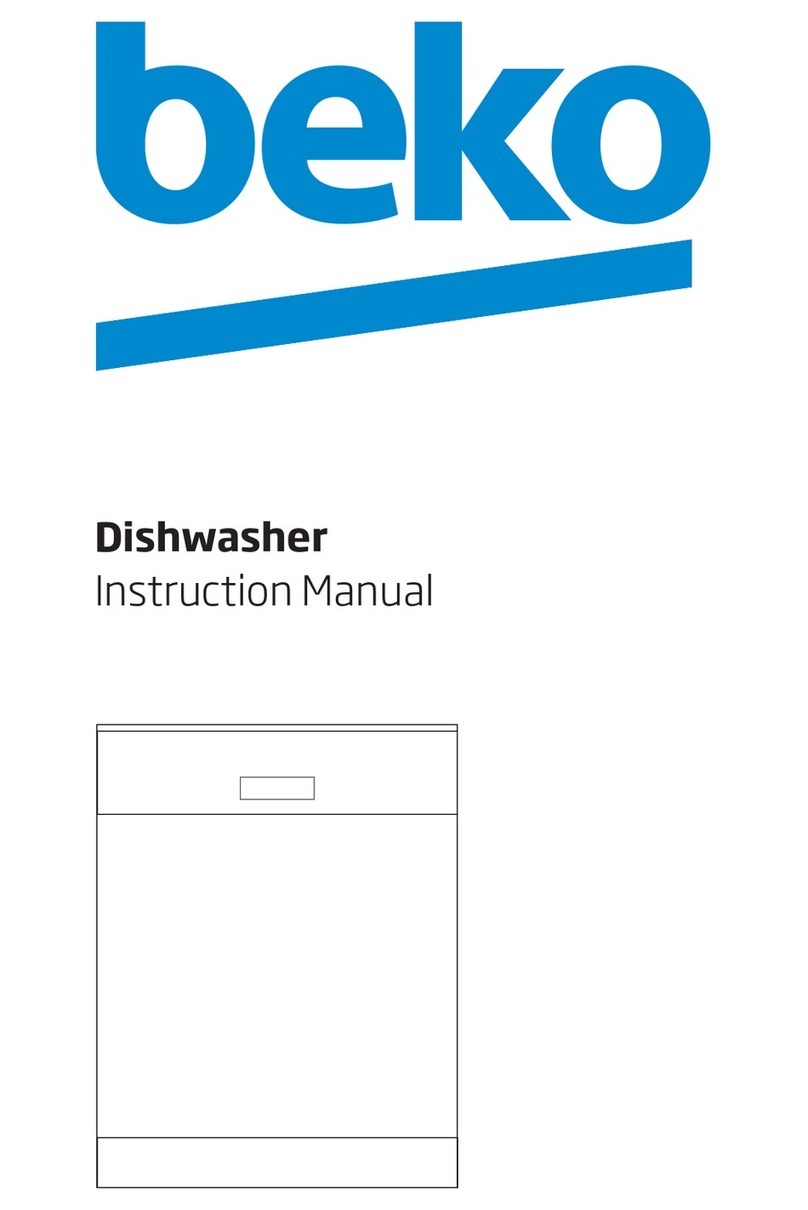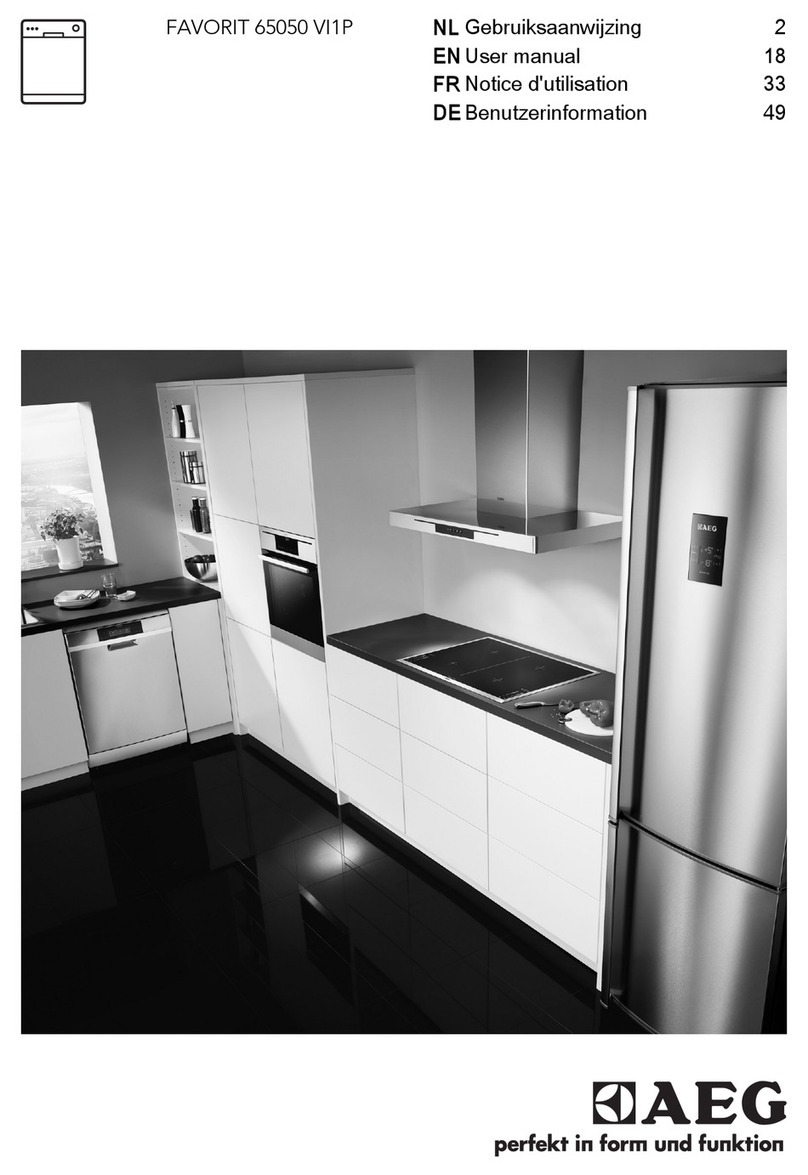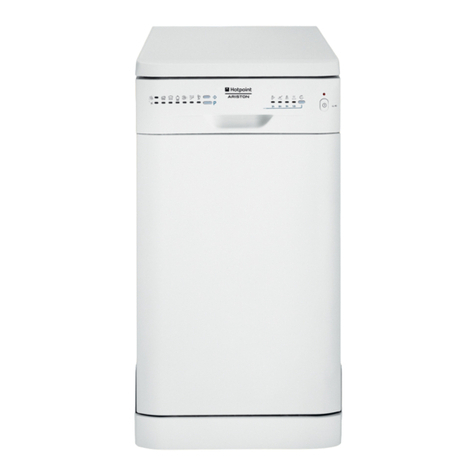
12 13
EN EN
Using the appliance Using the appliance
B B
How to drain excess water from hoses
If the connection to the drain pipe is positioned higher than 1000 mm, excess water may
remain in the drain hose. It will be necessary to drain excess water from the hose into a bowl
or suitable container that is held outside and lower than the sink.
Water outlet
• Connect the water drain hose. The drain hose must be correctly fitted to avoid water leaks.
• Ensure that the water drain hose is not kinked or squashed.
Extension hose
• If you need a drain hose extension, make sure to use a similar drain hose.
• It must be no longer than 4 meters; otherwise the cleaning effect of the dishwasher could
be reduced.
Syphon connection
The waste connection must be at a height less than 1000 mm (maximum) from the bottom
of the dishwasher.
Positioning the appliance
• Position the appliance in the desired location. The back should rest against the wall behind
it, and the sides, along the adjacent cabinets or walls.
• The dishwasher is equipped with water supply and drain hoses that can be positioned
either to the right or the left sides to facilitate proper installation.
Levelling the appliance
Once the appliance is positioned for levelling, the height of the dishwasher may be altered via
adjustment of the screwing level of the feet. In any case, the appliance should not be inclined
more than 2°
Free Standing Installation
Fitting between existing carbinets
The height of the dishwasher, 845 mm, has been designed in order to allow the machine to be
fitted between existing cabinets of the same height in modern fitted kitchens.
The laminated top of the machine does not require any particular care since it is heatproof,
scratchproof and stainproof.
Underneath existing work top
(When fitting beneath a work top)
In most modern fitted kitchens there is only one single work top under which cabinets
and electrical appliances are fitted. In this case remove the work top of the dishwasher by
unscrewing the screws under the rear edge of the top a.
WARNING
After removing the work top, the screws must be screwed
again under the rear edge of the top b
aa
bb


